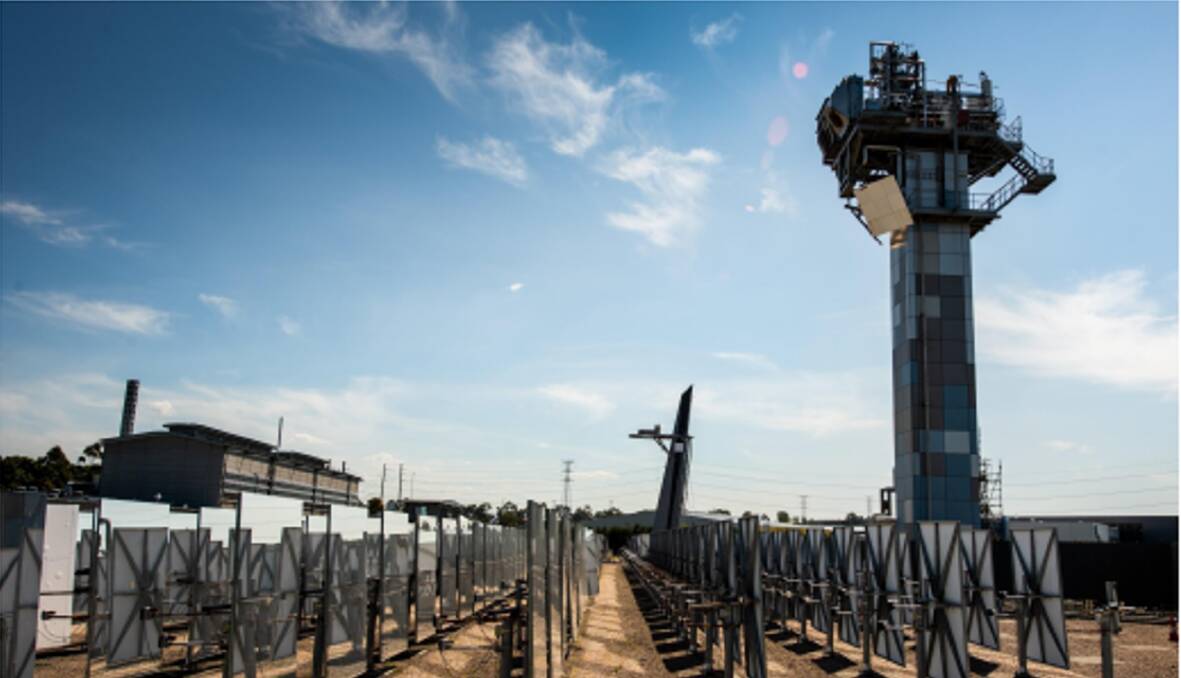Newcastle Herald, by Matthew Kelly
A Hunter Renewable Energy Industrial Precinct could attract $28 billion in private investment, support 34,000 new jobs and earn $11 billion annually by 2032, an economic analysis of the project shows.
The ACIL-Allen modelling commissioned by Beyond Zero Emissions (BZE) and World Wildlife Fund (WWF)-Australia also shows the Hunter has more than enough renewable energy potential to power the precinct in addition to allowing existing industry giants to achieve their decarbonisation commitments as well as support emerging green industries.
The analysis shows the complete decarbonisation of all existing industries in the Hunter (including Tomago Aluminium and Orica) requires approximately 22 gigawatts of renewable generation. This is comfortably achieved by the 29 gigawatts in generation potential of the Hunter-Central Coast and neighbouring Renewable Energy Zones and offshore wind projects.
A Renewable Energy Industrial Precinct is a cluster of industries powered by affordable 100 per cent renewable energy (including for heating requirements), minimising the cost of shared infrastructure and benefiting from economies of scale and efficiencies.
A Hunter precinct would support energy-intensive businesses such as green aluminium and steel, hydrogen, ammonia and chemicals production, recycling and battery manufacturing.
It will also provide a home for Hunter manufacturers of clean technologies such as wind turbines, electric vehicle chargers, batteries and mining equipment.
“Today the Hunter Region is writing a new chapter in its proud history as an industrial and energy superpower.
Establishing a Renewable Energy Industrial Precinct in the region will support the Hunter’s ambition to diversify its economy and realise its full potential in the zero-emissions economy,” the report says.
It is estimated that an investment of $8.5 billion is needed to connect the renewable energy zones to the precinct. An investment of $3.7 billion in energy storage is also required.
While there is strong investment interest in projects of this scale, the report found that government support is needed to lock in the commitments.
“As the Hunter experiences dramatic economic structural change communities and businesses in the region are looking to the government to recognise the scale of the challenge and back the Hunter to adapt and thrive as a global energy hub into the future,” the report says.
BZE’s Export Powerhouse report last year showed that Australia could grow a new green export market worth $333 billion a year by 2050 – almost triple the value of current fossil fuel exports – with the right government support.
A Federal government investment now would create certainty for investors, unlock private sector investment, boost innovation and create new jobs.
To kickstart seven Renewable Energy Industrial Precinct s across the country including the Hunter, the federal government needs to fund $6.3 billion in projects over the next 10 years, which would attract $37.8 billion in private investment with the additional support of state governments and public sector financing from institutions such as the Clean Energy Finance Corporation, according to analysis by BZE and WWF-Australia.
“Australian manufacturing is being revitalised thanks to renewable energy, attracting new investment, protecting jobs now, and creating thousands of new jobs for the future,” said BZE’s Hunter Project Manager Sam Mella.
“Renewable Energy Industrial Precincts are the smart way to take advantage of this boom, revitalising our industrial heartlands with low-cost renewable energy to make the goods the new economy demands.
“The Hunter has long been an energy and export powerhouse, and a Renewable Energy Industrial Precinct will continue that proud tradition long into the future, producing green steel and aluminium, green hydrogen, ammonia and chemicals, and batteries.”
Ms Mella said business could not be expected to build and coordinate the infrastructure needed to establish a Renewable Energy Industrial Precinct.
“Governments helped build our rail, road, energy and telecommunications infrastructure and now we need to ramp up our renewable energy capacity and develop Renewable Energy Industrial Precincts,” she said.
“Building Renewable Energy Industrial Precincts will be a big nation building project, larger than the Snowy Mountains scheme but with much greater returns.”
Hunter businesses and institutions have been supportive of a Renewable Energy Industrial Precinct for the region, with more than 40 statements of support from businesses, industry bodies, local governments and research institutions provided to BZE.
Committee for the Hunter chief executive Alice Thompson said the time had come to move the conversation forward from the opportunity of clean energy jobs to the plan and secure the partnerships and the resources needed to achieve the end result.
“BZE’s Hunter Renewable Energy Industrial Precinct offers a strategic place-based vehicle to do just this, tackling the fundamental challenge of how to decarbonise heavy industries, manufacturing to protect jobs and keep them competitive in the new energy economy,” she said.
Chief executive of Newcastle-based battery maker Ampcontrol Rod Henderson also endorsed the plan.
“Ampcontrol is at the forefront of developing and supplying advanced technology, products and services to the resources, infrastructure, and energy sectors that enable a competitive advantage in a net-zero carbon environment. “We strongly support a Renewable Energy Industrial Precinct here to position the Hunter Region as an energy manufacturing and transition powerhouse,” he said.
HunterNet chief executive Ivan Waterfield said the Hunter Renewable Energy Industrial Precinct would enable the region to build on its reputation as an energy powerhouse and the engine room of the state and national economies.
“The Renewable Energy Industrial Precinct will support the Hunter to become the most attractive energy-intensive destination for manufacturing,” he said.
“Adding value to materials and manufacturing locally will maximise the opportunities in the exported energy sector, embodied within manufactured products and better ensuring long-term employment growth and developing new industry.”
Ms Mella said the role of government had never been more important in helping to future-proof the Australian manufacturing industry.
“There are trillions of investment dollars leaving the fossil fuel industry at the moment which are looking for a new home in the renewables sector and they want the highest return on investment,” she said.
“Investors will go to the countries that build the infrastructure that maximises economies of scale, efficiencies and synergies and coordination to maximise revenue.”

